Google “Top 10 classical ballets” or something similar, and you’ll find a whole slew of lists that, in truth, really don’t vary a whole lot. Some feature more contemporary ballets and include the works of Frederick Ashton, Kenneth MacMillan, George Balanchine. Others opt for the whimsical and light, like Coppélia and La Fille Mal Gardée. More than one list includes the spicy, scandalous (for its time) The Rite of Spring. But invariably, at least eight of the same ballets appear on every list, complete with a tidy synopsis. A synopsis, by its nature, is factual, to-the-point and, okay, a touch dry. Why, I thought, should I slave away at penning ten synopses—and have I ever mentioned how much I hate writing synopses?—when there are so many already? Besides, you don’t come to The Classical Girl for dry and to-the-point prose. You come here because you like (I hope) my casual voice as I muse about the classics. So that’s what you’re going to get in my “Top 10 classical ballet” list. Some entries are long, others are way short. Because I can.
Now, if you specifically want the detailed synopsis experience (and the plethora of flashing advertisements that go along with the article), I’d recommend the UK’s Evening Standard’s list HERE and the shorter, less commercial Masterclass list HERE. (This link works even when it’s crossed out)
And so, without further ado, here’s my list of Top 10 classical ballets, in no particular order. My very casual musings will follow below.
- Swan Lake
- La Sylphide
- Don Quixote
- Giselle
- The Sleeping Beauty
- Cinderella
- Romeo and Juliet
- The Nutcracker
- La Bayadère
- A Midsummer Night’s Dream
1) Swan Lake
I can’t decide whether I’m thrilled that so many non-dance people know this ballet now, or if it makes me a little queasy that their image of the ballet and the ballet world will forever be colored by the film, Black Swan. If you’re a longtime reader, you’ll know what I think of this film. If not, and you’re looking for a chuckle, click HERE.
Story in short: A young Odette chances upon Von Rothbart, an evil sorcerer who casts a spell on her and poof, she now must live her life as a swan by day and a human at night. Siegfried, a young, restless prince in search of Something Big, encounters her and together they discover love. Odette shares that in order to break her swan-by-day spell, a man must publicly profess his undying love for her. No big deal, right? Well, the next night at the palace, at a party to celebrate Siegfried’s birthday, Von Rothbart does his evil magic again and adds his daughter, Odile, to the equation. Now visually identical to Odette, she dances up a storm. Siegfried falls for it and, oops, professes undying love for the imposter. Bad things ensue.
Best moment in the ballet: The stage filled with the swan ensemble of 24(ish) dancers in Act III is just stunning. A close second is the Act II “Black Swan” pas de deux. Odile is almost always performed by the same dancer as Odette, which is why it’s such a challenging, iconic role for the ballet dancer. And, well, the Act I pas de deux between shy Odette and Siegfried, is amazing. Maybe THAT one is my favorite. Oh, the choices!
2) La Sylphide
The history of this production and its star, Marie Taglioni, and the craze that followed, was so interesting and engrossing, I turned it into its own blog. Check it out HERE.
Story in short: Mystical Sylphide enchants and distracts James, a young Scotsman on the eve of his wedding, with ill-fated results.
La Sylphide is less well-known and less frequently performed than the other ballets on this list, but its historic significance begs for it to be included here. First choreographed by Filippo Taglioni in 1832, then restaged by August Bournonville in 1836, which is the better-known staging. As I mentioned above, the ballet made Marie Taglioni (Filippo’s daughter) a star of epic proportions. This ballet shouldn’t be confused with Les Sylphides, a short non-narrative ballet (maybe one of the first) by Michel Fokine, set to the music of Chopin.
3) Don Quixote
I wrote a “Top 10 trivia bits” about this ballet. They’re fun; check ’em out HERE.
Story in short: In line with the Cervantes novel, Don Quixote, the quintessential romantic dreamer, escapes into a fantasy of his own making, believing he is a knight who must revive the golden age of chivalry. The ballet version features a high-spirited girl, Kitri, whose father wants her to marry, and Basilio, the town barber who loves her, but is NOT her father’s choice. Antics, comic romping around, paths crossed, and generally good times.
Best moment in the ballet: the Grand Pas de Deux. See above, danced with perfection by Angel Corella and Paloma Herrera. It steals my breath every time I watch it.
4) Giselle – this wins the award for being the oldest of the big classical ballets (1841), as well as the one that has best stood the test of time. Yes, La Sylphide was earlier, but this is the one still performed absolutely everywhere. My Bachtrack review of the ballet can be found HERE.
Story in short: Village girl with bad heart flirts with, and has fallen for Albrecht, a nobleman who’s disguised himself as a peasant because he wants to be just an ordinary Joe with her. They dance, there’s a village festival and, whoops, Albrecht gets called out when a royal party arrives and it includes Princess Bathilde, his fiancé. Giselle goes mad with grief at Albrecht’s betrayal and falls dead. In Act II she becomes a Wili—maidens dead before their wedding day—and Albrecht seeks her out. But the Wilis are set to tear apart any guy who shows up, and Myrthe, queen of the Wilis, is out to get Albrecht. And yet poor devoted Giselle fights for him to keep his life. Not a very empowering message for women today.
Best moment in the ballet: Everything to do with the Wilis. Giselle as a Wili is more interesting to watch than the overly buoyant village girl. The whole second act flashes by oh-so-quickly, and really tugs at your heart.
5) The Sleeping Beauty
Ten years after Tchaikovsky composed the score of Swan Lake (which, tragically, wouldn’t receive its full, well-deserved acclaim until after his death), he collaborated in St. Petersburg with Imperial Ballet choreographer Marius Petipa (French-born but very Russified after 40 years as ballet master and chief choreographer) and Len Ivanov, Petipa’s assistant, and the three produced pure magic in The Sleeping Beauty. It was an instant hit. Everything about this one is classical and sublime. I think if I had to pick one ballet score to listen to for the rest of my life, it would be this one. I reviewed San Francisco Ballet’s production HERE.
Story in short: Same as the fairy tale we all know. At the christening of Princess Aurora, six fairies bring her their gifts (Generosity, Humor, etc) but Carabosse, the evil fairy, was left off the invitation list, and she arrives, pretty peeved. In revenge, she casts a spell: death to Aurora by her 16th birthday, from a finger prick on a spindle. The Lilac Fairy, the last to present her gift, softens the sentence. A 100-year sleep and not death. And so on. In Act II, 99.9 years into the sleep, a bored-with-life Prince Desiré spies Aurora in a dreamy “trance” scene, as she spins and weaves among the corps dancers, and he is smitten. The Lilac Fairy leads him to the castle, he kisses the sleeping Aurora, all awake, everyone is happy, and Act III is basically just dancing at their wedding. But, hey, it’s very good dancing.
Best moment in the ballet: I love the Wedding Pas de Deux in Act III, but if I had to pick one best scene, like most balletomanes, it would be “The Rose Adagio,” where Aurora dances with four princes who are asking for her hand in marriage and she’s so strong and lovely and ultimately independent. And to hold the unassisted poses the choreography calls for is VERY HARD WORK for the dancer. It’s another one of those roles, like Odette/Odile, that challenge the ballerina to the limit of her skills. Very satisfying to watch her nail it all.
6) Cinderella
I adore Christopher Wheeldon’s production. It has spoiled me for all others. I reviewed it HERE.
Story in short: What you’d expect. The rags-to-riches fairy tale penned by French storyteller Charles Perrault. The ballet is funny as hell in most versions.
Best moment in the ballet: In the Wheeldon production, a pumpkin gets magically transformed into a carriage in the blink of an eye, and then whisks Cinderella off. You see carriage racing, her robe flowing in the wind, but it’s just an illusion. A glorious, mind-blowing one. Also, the tree that grows and grows from Cinderella’s tears. Wheeldon’s creative team, including Julian Crouch (set design and costumes) and puppeteer Basil Twist, create pure magic.
7) Romeo and Juliet
This is a fave for many, many people, but I dunno, I just find the whole R&J story to be so dark and not terribly entertaining. I adore Prokofiev’s score, though. Kenneth MacMillan’s is a very famous staging, but I won’t say “the most” famous because I haven’t researched it a lot, and I love his “balcony scene” pas de deux too much to consider contenders.
Story in short: You’re not going to make this spell this one out, are you? Okay, just to play it safe, like, if you crawled out from under a rock where you’ve been living most your life. Montagues and Capulets = war. Romeo and Juliet = eternal love. Combination = disaster.
Best moment in the ballet: The aforementioned balcony scene pas de deux. Just stunning. Prokofiev’s music plus MacMillan’s romantic, sexy choreography produces pure euphoria for the characters and audience alike. HERE is a YouTube link if you want to check it out (and you do, trust me).
8) The Nutcracker
The ballet you are most likely to have seen. Please tell me you’ve seen this during the Christmas holiday season. If not, do yourself and your niece/daughter/friend’s daughter a favor and make next year be the one you buy those tickets and see the damned production once and for all. Highly recommended is San Francisco Ballet’s extravaganza, staged and choreographed by artistic director Helgi Tomasson. He will be retiring in 2022 and I can’t bear the possibility that, some day, there will be a different SFB Nutcracker production. So head out to the West Coast and see it while you can. It’s amazing. HERE is my review.
Story in short: At a family Christmas party, Clara (or Marie) is dazzled by Herr (or Uncle) Drosselmeyer’s gift of an elegant nutcracker prince. Family party gets too raucous, nutcracker gets broken, party disperses and Clara goes to sleep on the couch and has fantastical dreams of a battle, her nutcracker prince becoming real. She helps her prince prevail against the Mouse King and in gratitude, he takes her to the Land of Sweets (or something equally euphoric) and a bunch of exotic characters dance for her.
Best moment in the ballet: In San Francisco Ballet’s production, when Clara’s fallen asleep on the couch and the music builds, so does the Christmas tree in the corner, and in the course of about 16 counts, the whole living room shape-shifts and transforms into an oversized dream world. Stunning. That, and the SFB’s “Land of Snow.” Blizzard conditions. It’s delightful and rather hilarious.
9) La Bayadère
Confession: I’ve never seen the whole ballet. In that, I don’t think I’m alone; it’s the “Kingdom of the Shades” scene that supersedes the evening-length ballet in terms of popularity and viewing opportunities. Originally staged in 1877 by choreographer Marius Petipa, most versions we see now of La Bayadère are derived from the Mariinsky/Kirov Ballet’s production of 1941.
Story in short: Temple dancer named Nikiya is in love with the handsome warrior, Solor, who also loves her. But the High Brahmin has his eye on Nikiya, and sets a plan in motion to separate the pair so that he might have Nikiya for his own—with tragic consequences.
Best moment in the ballet: Without a doubt, the Kingdom of the Shades scene. Composer Ludwig Minkus nailed the dreamy yet haunting mood. See for yourself in this excerpt from the Paris Opera Ballet production.
10) A Midsummer Night’s Dream
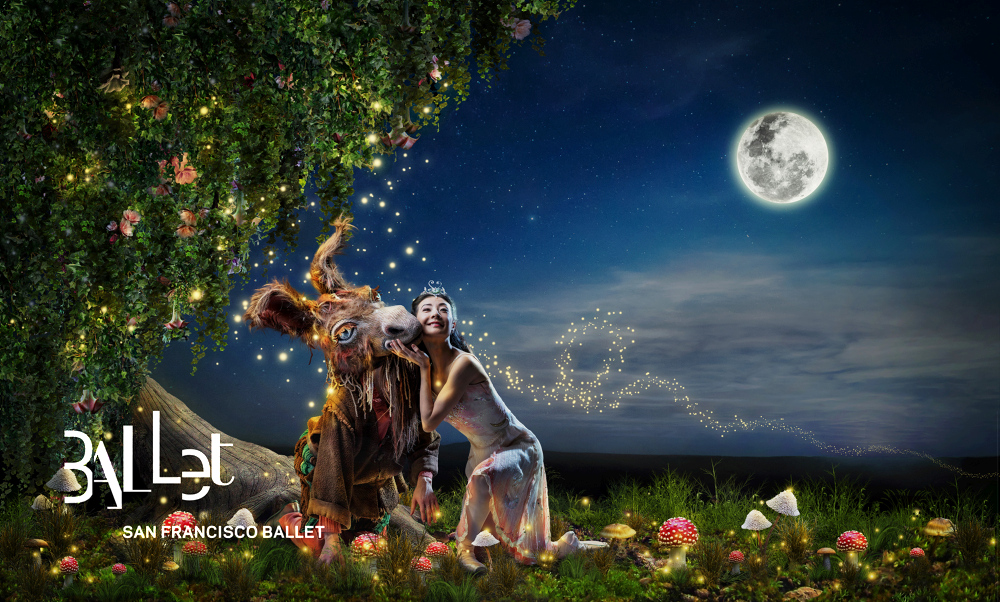
San Francisco Ballet performed one night of this delightful ballet in March 2020 before COVID-19 shut down the War Memorial Opera House. I was holding two tickets for two separate performances the very next day and could hardly believe my bad fortune, but I took solace in knowing a whole lot of people were in the same boat. And oh, how my heart ached for the dancers. Dancers and dance companies everywhere. Ugh. But I digress. Created in 1962 to music by Felix Mendelssohn, A Midsummer Night’s Dream, set to Mendelssohn’s eponymous score, it was George Balanchine’s first original full-length ballet, and quickly hailed as a masterpiece. I did have the good fortune, at least, to attend an in-house rehearsal and I blogged about it HERE.
Story in short: Oberon and Titania, King and Queen of the Fairies, quarrel over the changeling child they both want, a boy who serves as Titania’s page. When she refuses to give him up, Oberon enlists Puck to stir up some magical mischief. Parallel to the fairy realm squabbling are two couples caught in the throes of love—or not. Lysander and Hermia are deeply, cloyingly, in love, with eyes only for each other. Demetrius and Helena, meanwhile are not quite so much in love. She is lovesick and desperate for his affections, while he pines only for the unavailable Hermia. Oberon, observing Helena’s distress, instructs Puck to touch the slumbering Demetrius’ eyes with a flower pierced by Cupid’s arrow, causing him to fall in love with the first person he sees upon awakening. Only Puck gets it wrong, and comic mishaps ensue.
Best moment in the ballet:
Titania, awakening from a drug-induced sleep, a magic elixir that makes her fall in love with whomever she first sets eyes on. In her cast, he’s an ass. Literally. (Another magic elixir at play.) The two dance a glorious, hilarious pas de deux, her utterly smitten, him perplexed but accommodating.
And there you have it! Here’s the list one more time so you don’t have to scroll all the way back to the top in order to start assembling your bucket list of ballets you now really, really need to check out.
- Swan Lake
- La Sylphide
- Don Quixote
- Giselle
- The Sleeping Beauty
- Cinderella
- Romeo and Juliet
- The Nutcracker
- La Bayadère
- A Midsummer Night’s Dream

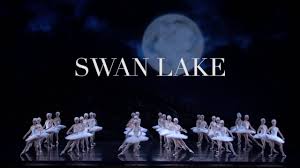
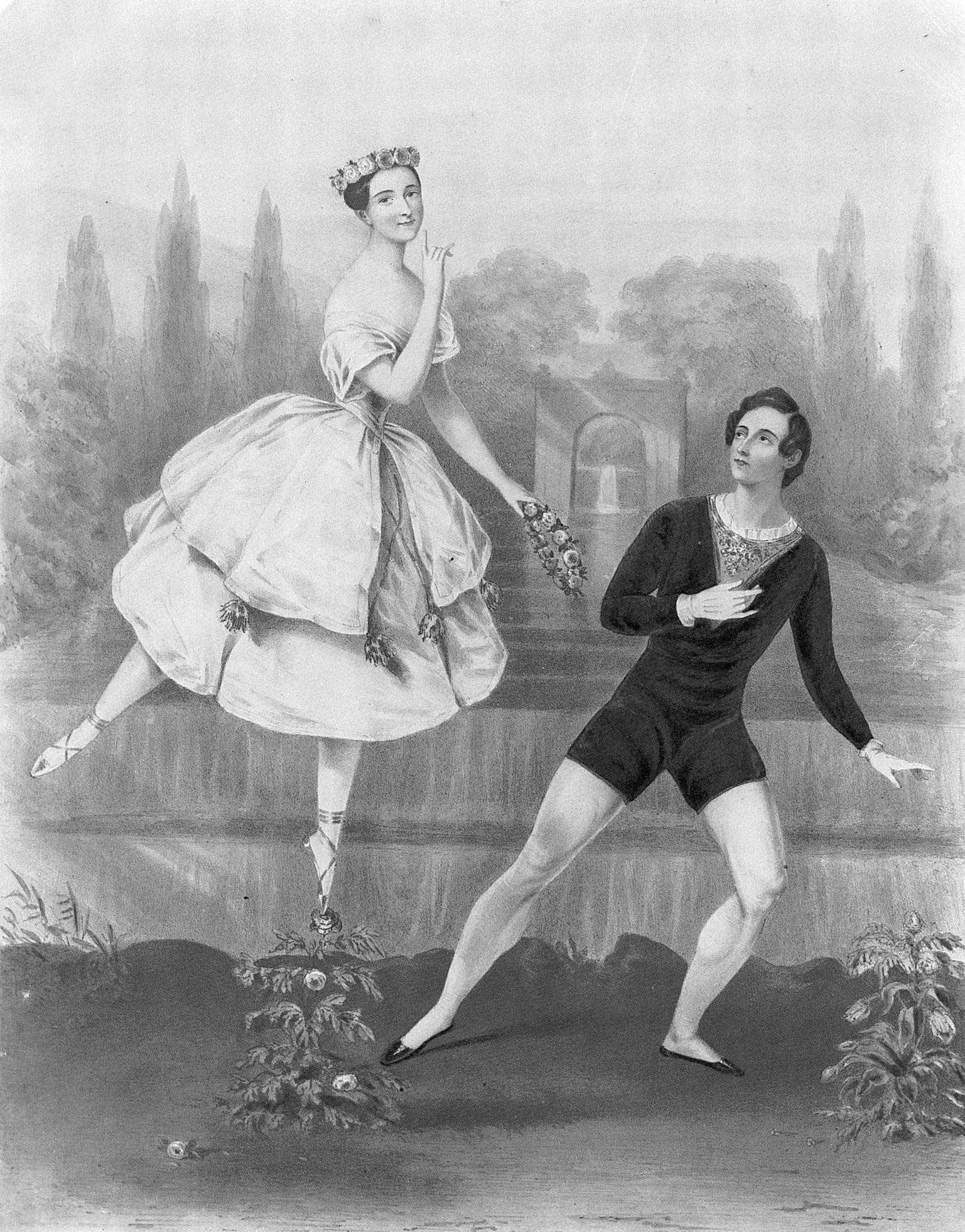
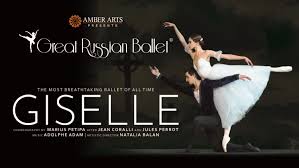
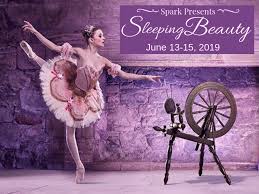
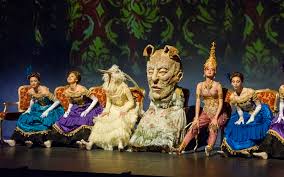
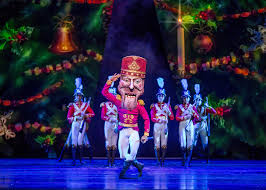
Nice!
If only I had time to watch each and every one of these! Perhaps when and if the day comes that my time is my own instead of work or grown children or grandchild….dog even. Sigh. Thank you for this list as I will keep it and treasure it for the when the day comes that I can actually utilize it. 🙂
Well, you can settle for watching a few trailers on YouTube and the embeds I included, for now. Hey, that works for me, too! And as for the rest, well, dreaming’s free, and thank goodness for that!
Love the lightness of your comments, and the links to so much more. I appreciate your insights and down to earth explanation of these iconic ballets!
You are most welcome, Kathleen! Thanks for posting your own thoughts!